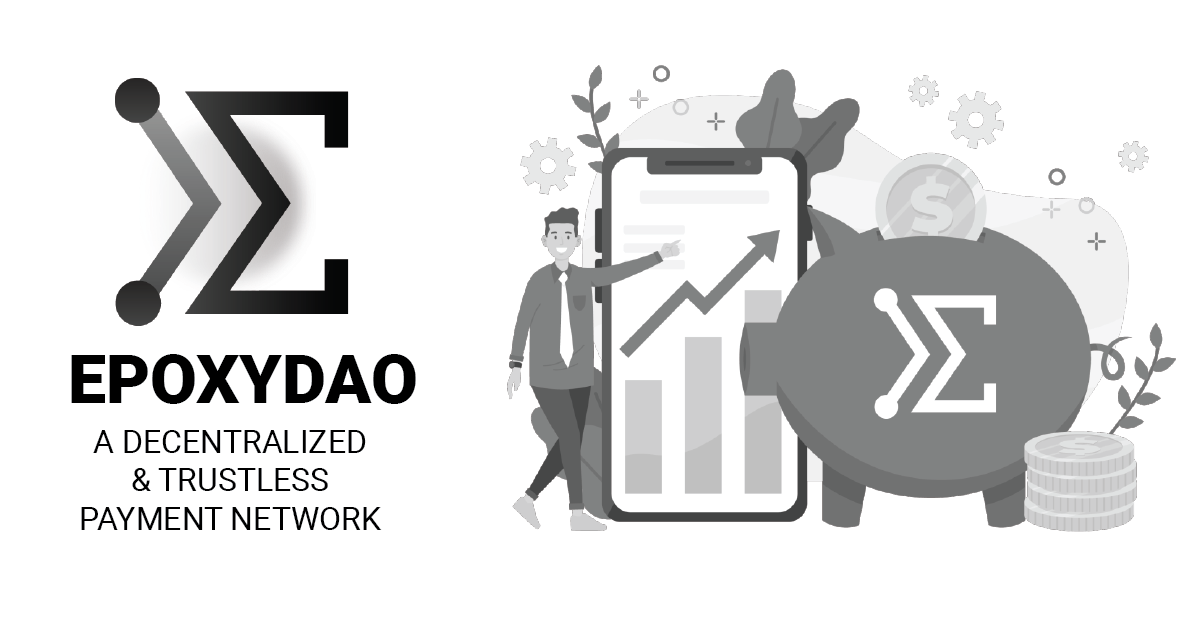To mitigate the volatility associated with cryptocurrencies, stablecoins have come out as the next big thing in eCommerce. These are cryptocurrencies that provide a safe harbor to traders, similar to gold, which reduces their risk with crypto assets. It aims at being widely used as a daily transaction currency. Currently, there are more than 200 stablecoins to choose from.
EpoxyDAO proposes merging all the stablecoins under a unified stablecoin PEX and it’s variant eUSD. EpoxyDAO is a DeFi (decentralized finance platform) which is managed by the community through Epoxy governance that is backed by the governance token EPX.
EpoxyDAO is more than your traditional bank
On one hand, EpoxyDAO would give you the services of a traditional bank where you can deposit your currencies to get one standard currency with the added charm of being a decentralized system that is managed by people all over the world having a governance token EPX. With a multitude of stablecoins out there in the market, there is confusion amongst people on which one to select. Ideally one does not need so many variants of the same kind of currency hence EpoxyDAO gives a more standard form for people’s convenience. All the variants of USD pegged stablecoins will be merged by Epoxy into one standard version.
Let us say there are 100 banks out there and each of them issues their own stablecoins then there will be 100 stablecoins. Each time they will have to introduce their own stablecoins to other banks. But with the umbrella of single standard stablecoin PEX, provided by EpoxyDAO, banks have a standard currency to transact with and there is no need for them to dabble into 100 different stablecoins.
Even the traditional banks in the real world can use Epoxy as a central bank for interbank and other types of transactions more efficiently. It is possible for banks to issue their own fiat-backed ERC20 collateralization tokens as well as issue PEX and eUSD as a standard common currency.
How EpoxyDAO solves issues around Stablecoins
Stablecoins represent fiat on the blockchain. One cannot use highly volatile currencies like bitcoin or Ethereum for everyday transactions hence fiat or stablecoins are the only means for this purpose. Stablecoins are not bound by geopolitical borders and do not involve service charges like other centralized payment processors. But most of the stablecoins are token based on other blockchains. This raises issues like:
- Slow performance which is true for all smart contract platforms.
- Inefficient processing as they are totally dependent on the parent blockchains.
- If a parent blockchain is overloaded or has other issues, then all the stablecoins that are using that blockchain get affected.
- Most of the existing stablecoins are based on the Ethereum blockchain which makes this network overloaded. Token or Stablecoin transactions using this blockchain are no more efficient.
- Ethereum based stablecoins cannot be used for everyday transactions as it involves a heavy processing fee. The Ethereum transaction fee reached a maximum on September 1st, 2020 at 12.54 USD per transaction.
- Stablecoins like USDT use bitcoin blockchain which is extremely slow and cannot prove beneficial for instant transactions. At times it takes 12 to 24 hours for one transaction to get confirmation from the network. This way you will have an expired invoice while trying to pay through bitcoin blockchain.
All these problems will not affect eUSD as it has a dedicated blockchain. Stablecoins and fiat transactions will become much easier, cheaper, and efficient with this technology. eUSD carries immense potential to become a stablecoin giant in near future with the aim to capture a 5 billion USD market in the next two years.
Pillars of EpoxyDAO
The Epoxy protocol is a decentralized application running on the Ethereum blockchain. Changes to the protocol can be done by people who hold EPX. Some of the highlights of this system are:
- EpoxyWallet – You can access the Epoxy ecosystem conveniently by using the Epoxy wallet. It is a light client with user-friendly features that gives access to all the functions of EpoxyDAO. The EpoxyWallet is integrated with two blockchains i.e. Ethereum and Epoxychain.
- EpoxyChain – This is a separate blockchain dedicated to handling eUSD. It manages eUSD issuance, burning, and transactions. Epoxychain’s sole purpose is to deliver stablecoins functionality with high efficiency and speed. There are nearly 0 transaction fees and a supremely high TPS (transactions per second) rate. It is a trustless P2P payment network that is borderless and completely decentralized. The capabilities of Epoxychain will surely surpass the power of PayPal, VISA, or any other payment processor. It is designed in such a way that 7.8 billion people around the world can use it.
- eUSD – This is a cryptocurrency and not a token. It is the main stablecoin of this platform backed by ERC20 PEX at a 1:1 ratio. This can be seen as a digital version of the dollar and does not have a fixed supply. Its supply is dependent on the amount of PEX locked in the TokenLocker. eUSD is totally dependent on the performance of PEX and is the perfect choice for everyday and institutional transactions.
- PEX – This is the intermediate currency between Epoxy protocol and Epoxychain and is an ERC20 token. PEX is backed by existing stablecoins and is meant to be pegged with 1 USD though its performance depends on the collateralized stablecoins. Once PEX is generated it can be used as a regular stablecoin or to issue eUSD. The main purpose of PEX is to back eUSD by merging all ERC20 stablecoins.
- EPX token – This is the governance token of Epoxy protocol and is a key component that balances the values of stablecoins and controls Epoxy protocol.
EpoxyDAO will bring the major change in the crypto world by making stablecoins more stable. It does that by creating demand for a specific stablecoin if its value declines. The Epoxy ecosystem does not need a liquidity provider to run it. PEX and eUSD are automatically created and burned which makes liquidity unlimited. If everyone locks their stablecoins to adopt eUSD then there is no need to look at the whole gamut of stablecoins. They can use eUSD everywhere without paying any slippage or swap fees since there is no exchange of stablecoins here.


















